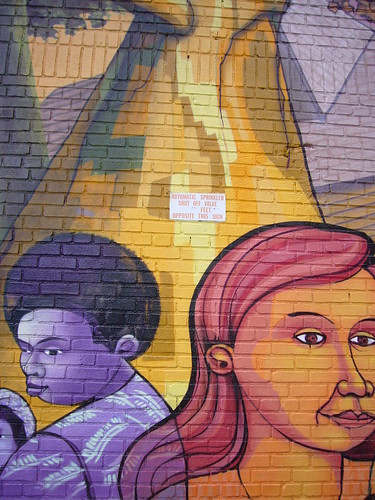"The most beautiful thing in the abandoned hospital was the peeling paint." This sentence starts Rebecca Solnit's "Abandon" essay in her 2005 book A Field Guide to Getting Lost.
In the early 1980's, Solnit spent six months in an abandoned hospital near San Francisco, accompanying her then-boyfriend as he shot a Super 8 film on location. She was a punk rocker then, something that she sometimes refers to in her writings. After her fascination with ruins, she returned to (a more straightforward) nature, and lately she's been more into activism and politics.
The abandoned hospital is just a tool for Solnit to make the small leap to discussing Demeter, Persephone, and Hades; she then takes a bigger leap when discussing the beauty and "abandon" of her deceased friend Marine. Solnit is one of America's preeminent contemporary nature philosophy writers, but to hear Solnit discuss abandoned ruins for just a few pages is nourishing.
"Ruins become the unconscious of a city, its memory, unknown, darkness, lost lands, in this truly bring it to life," she writes. Much later in the essay, she talks about the area of New York City (it seems that she lived in NYC for a while, or at least visits frequently) that is now the sports complex called Chelsea Piers. She briefly looks back to the years when the Chelsea Piers was a "temporary autonomous zone" at which gays cruised and groped each other. Peter Hujar and David Wojnariowicz are mentioned, and the description of the ruins of Chelsea Piers are described so beautifully that I wish I were there. ("Paper from old shipping lines scattered all around like bomb blasts among wrecked pieces of furniture"..."this kind of place, one that was ruinous, bleak, but somehow still imbued wtih a romantic outlaw sense of possibility, of freedom, even the freedom to be idealistic...") Earlier, she described the "new" Chelsea Piers, and says "although it may yet yield to ruin again". Oh, that would be great, but I hope I don't have to wait for the apolocalypse for it to happen.
Solnit seems to be a bit of a hippy, or perhaps I'm confusing the term "hippy" with "idealist." (It should be noted for the record that the word "hippy" has a personal positive connotation in my world.) I was intrigued when I stumbled upon her artistic link to Mark Klett, and it makes me warm inside to know that she's explored ruins as well, although she tends to hint at "the golden age of ruins" having passed. Also, has she wandered into ruins recently, as she has matured 20 years into her life? (I ask this somewhat rhetorically; I think I know the answer, but I'd love to hear what she has to say on the topic.)
"We are now at the beginning of an era whose constructions are far scarier than ruins. In the time of which I write, the new silicon-based life forms were sneaking into every interstice without setting off alarms that all would be utterly changed in a way far more insidious than nuclear war, that they would bring a new wealth that would erase the ruins."
To start the essay with such beauty and end it with such despair is heartbreaking. But Solnit is an idealist. But is she an optimist? I'm hoping that delving further into her work will answer my question.
Sunday, January 27, 2008
Subscribe to:
Post Comments (Atom)

No comments:
Post a Comment